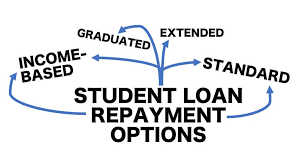Introduction
President Bidens’ student loan forgiveness and relief program addresses student loan interest capitalization, payment pause, and repayment. The changes essentially affect the Public Service Loan Forgiveness (PSLF) program that allows federal student loan borrowers to receive payment credits (Aid, 2018). PSLF covers individuals with Perkins or Federal Family Education Program (FFEL) loans, those who have failed to make timely or full payments, and borrowers on the wrong repayment plan (Curtis & White, 2019). Government organizations at the local, state, and federal levels, including the U.S. military, and not-for-profit institutions that are tax-exempt, are eligible for PSLF. However, one must be employed by a recognized institution or qualified employer to qualify for PSLF credit. Biden’s student loan forgiveness plan aims at making repayment more affordable, fair, and with minimal effect on American taxpayers.
The Effectiveness of the Plan
President Joe Biden and the U.S. Department of Education announced a plan to help federal student loan borrowers transition to regular payment. The plan is three-fold, with loan forgiveness of up to $20,000. As part of the plan, Biden paused the extension of loan repayment (Congressional Research Service, 2022). The COVID-19 pandemic ushered social and economic challenges, affecting the flow of money. Given that the Biden-Harris Administration extended loan repayment several times, those without federally held loans have yet to have to make loan payments. The pause has since been extended through December 31, 2022, and will resume in January 2023. In addition, the plan provided targeted debt relief to middle- and low-income families. In doing so, Biden-Harris Administration targets to increase the efficiency of the student loan system, as demonstrated in Figure 1. The Department of Education has not student loans under Biden’s policy. Thus, borrowers can benefit from the policy, and thus, Biden’s policy might work.

The U.S. Department of Education proposals present competing visions from the Republicans and Democrats on the future of student loan repayment and forgiveness. Republicans propose loan relief, while the Democrats offer proposals for forgiveness. Given that Congress will less likely consider the Republican plan, Biden has actively incorporated elements of the proposed legislation into the PSLF program. Borrowers’ student loan balances will not grow if they make monthly payments. Friedman (2022) mentioned that the PSLF plan recommends a relief of 10,000 dollars for federal student loan borrowers, including Parent PLUS Loans, Direct Loans, Perkins Loans, and FFEL Loans. In contrast, Democrats want the cancellation of 50,000 in student loans, but the Republicans prefer a small-scale cancellation (Friedman, 2022). Broad loan cancellations offered by other financial services are unfair since they disproportionately benefit high-income earners. The PSLF simplifies student loan repayment by limiting waivers and eliminating bureaucracy within the U.S. Department of Education.
Loan Repayment
For example, limiting waivers enables borrowers previously ineligible for a student loan to count toward the student loan forgiveness plan. The policy has increased the number of eligible borrowers for some relief. Approximately 27 million people will be eligible to receive cancellations benefits of up to 20,000 dollars, out of which 20 million borrowers will have their loan balances fully canceled (Congressional Research Service, 2022). Since taking office, Biden has canceled public servants’ student loans of approximately 8 billion dollars (Friedman, 2022). Currently, the United States uses four repayment plans: ICR, REPAYE, income-based repayment (IBR), and PAYE (Friedman, 2022). The Biden-Harris Administration supports replacing of income-driven repayment plans with a single framework like IBR. Furthermore, capitalizing on student loans that accrue interest on student loan balances has raised concern from policymakers and the public. Interest capitalization typically exacerbates the growth of loan balances, forcing borrowers to pay interest balances on their principal. Therefore, it would be fair to pay others back pay within the last ten years that would have qualified for it.
Impact on American Tax Payers
The U.S. Department of Education (ED) has developed an order that allows borrowers who qualify for multiple loans to apply for the cancellation benefit. In essence, the benefits are applied to defaulted loans and then take into consideration non-defaulted loans under specific programs. However, for individuals with remaining student loan balances upon benefit cancellation, ED recalculates their monthly payments, which might gradually reduce (Congressional Research Service, 2022). However, changes made to borrowers’ accounts based on such adjustments might count toward their PSLF forgiveness or IDR. Consequently, borrowers will be restricted to counting the same service period toward PSLF and Teacher Loan Forgiveness (TLF) and have to be employed by a certified contractor.
Conclusion
The Biden-Harris Administration proposes changes to student loan programs and to make loans more affordable. Biden’s student loan relief program would potentially alleviate debt burdens for student loan borrowers, including public service workers under the Public Service Loan Forgiveness (PSLF). Additionally, the plan includes measures to address interest capitalization by lowering the overall cost of loans in areas not required by statute. While the plan has not fully taken effect, there are noticeable changes, making it fair to pay people back within the last ten years that would have qualified for a student loan. While the costs of the student loan forgiveness plan will pass on to the American taxpayers, they will be minimal.
References
Aid, F. S. (2018). If you are employed by a government or not-for-profit organization, you may be able to receive loan forgiveness under the Public Service Loan Forgiveness Program. Federal Student Aid: An Office of the U.S. Department of Education. Web.
Congressional Research Service. (2022). The Biden Administration’s one-time student loan debt relief policy. Web.
Curtis, T., & White, A. M. (2019). What’s wrong with Public Service Loan Forgiveness and how to fix it. Available at SSRN 3478855. Web.
Friedman, Z. (2022). Student loan forgiveness: How major proposals compare. Forbes. Web.
Fay, M. (2022). Income-based repayment of student loans. Department Consolidation. Web.